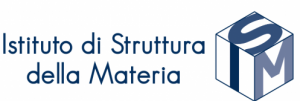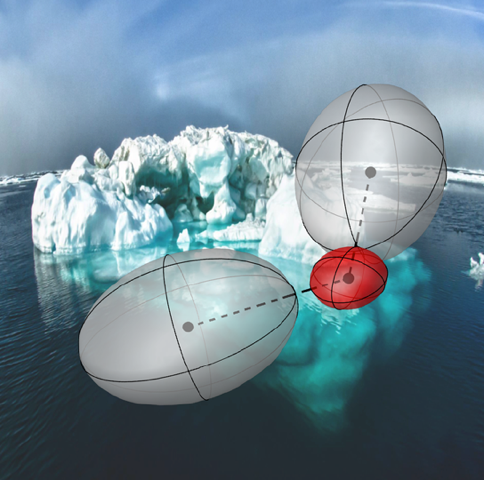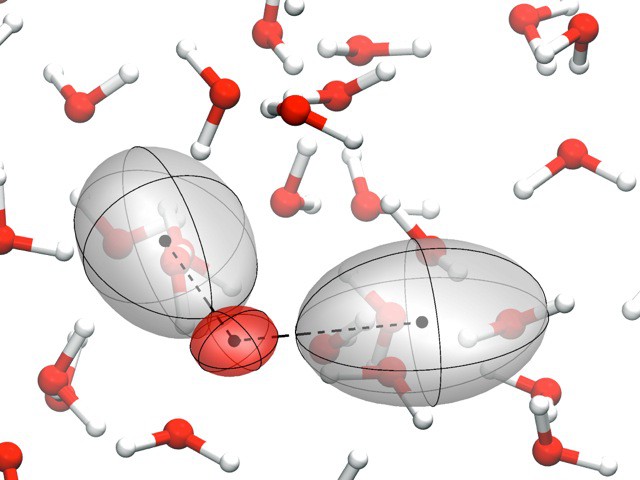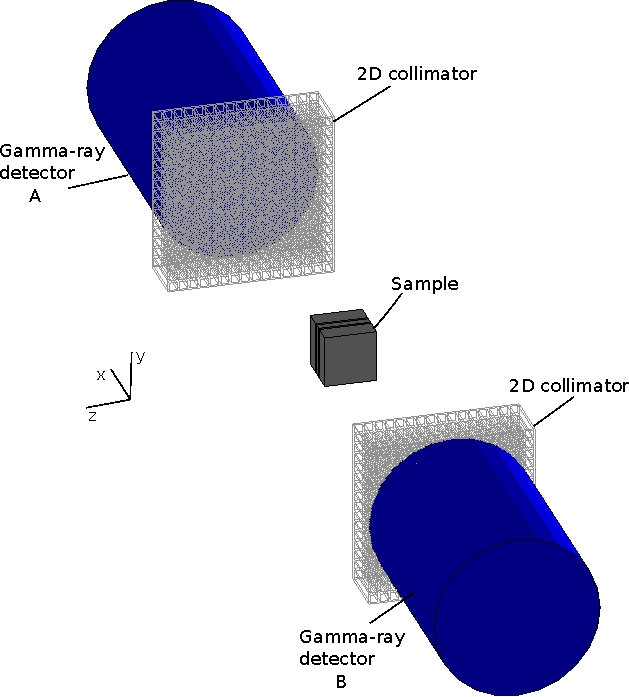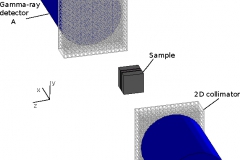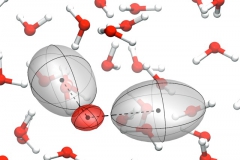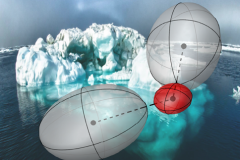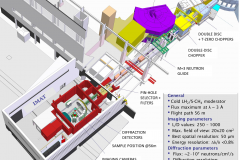- Home
- Past News & events
Conference: Deadline abstract submission Nanosmat 2009
The deadline for abstract submissions for the 4th NanoSmat Conference to be held in Rome, is fast approaching (30th June 2009).
Please submit your Abstract to abstract@nanosmat2009.com by 30th june 2009.
Meeting: ISM vs NAST
Location:
CNR, Area della Ricerca di Roma II, Aula Convegni
Download pdf Meeting
- prof. Del Sole.pdf
- prof. Desideri.pdf
- prof.ssa Licoccia.pdf
- dr. Morales.pdf
- dr. Pulci.pdf
- prof. Richter.pdf
- prof. Rosato.pdf
- dr. Senesi.pdf
- prof. Venanzi.pdf
Seminar: MD simulation of Nafion-related fluel-cell membrane materials
28th April 2009 – 15:30
Speaker:
Prof. Josh Thomas (Uppsala University)
MD simulation of Nafion®-related fuel-cell membrane materials
Location:
U.M. Grassano, Campus
Abstract:
Perfluorosulphonic acid (PFSA) polymers have long been the proton-conducting membranes of choice in PEMFC and DMFC applications. Nafion® has indeed become the standard against which any new polymer FC membrane must be benchmarked. What then is special about this material – and how could it be improved?
Molecular Dynamics (MD) simulation can provide us with valuable insights to help answer these questions. With today’s high-performance computers, simulations can be performed involving tens of thousands of atoms. I will describe MD simulations of two hydrated membrane polymers for comparison purposes: Nafion® and another popular FC membrane material Hyflon® – earlier known as the Dow® membrane. These two polymers differ only in the nature of their side-chains. Subtle differences are found to result in their water-channel morphologies and in the local environments and dynamics of the hydrated protons which move in their channels. These differences can help explain the differences found in the properties of these two membranes.
Related Information:
Poster
Seminar: A Planet in search for Energy
 27th April 2009 – 15:00
27th April 2009 – 15:00
Speaker:
Prof. P. Gomez Romero (Centro de Investigación en Nanociencia y Nanotecnología, CIN2 (CSIC-ICN),
Campus UAB, 08193 Bellaterra -Barcelona- SPAIN)
Location:
U.M. Grassano, Campus
Abstract:
With cheap oil is on its way to extinction and more abundant carbon threatening climate and environment, our present model for energy generation and consumption is doomed to a radical change or to a radical crisis. And yet, every year we burn more and more fossil fuels. We are already living the beginning of a complex combined problem between energy and the environment, a problem that will not vanish miraculously through the chimney. But every year we use more and more energy.
Maybe in the slumber of the kingdom of dispensable consuming, our supposedly civilized society doesn’t seem to be alarmed by this situation. We seem to believe that, when the time comes, science, technology and the market will come to our rescue providing the massive amounts of energy needed to keep our society moving. But the time is NOW. In this talk we will present the overwhelming problem of energy in our present society, the links between energy, environment and economy and the many lines of action that could be taken to tackle this problem. This will include technological and social aspects, all intertwined to the limit. Hydrogen and fuel cells, solar energy and other renewables, nuclears, energy efficiency…a cocktail difficult to digest for the public in general which we scientists have the responsibility to explain to our fellow citizens. This talk aims at showing how.
Related books:
Pedro Gomez-Romero “Un planeta en busca de energía” Ed. Síntesis, 2007
Pedro Gomez-Romero. “Metaevolución. La Tierra en el espejo” Ed. Celeste, 2001.
www.cienciateca.com
Related Information:
Poster
Ancient Charm: i neutroni per l’arte. Svelati i segreti delle teste bronzee del Ghiberti
 Release presso l’ Università Tor Vergata
Release presso l’ Università Tor Vergata
Conference: NANOSMAT 2009

Rome, 19th – 22th October, 2009
4th International Conference on Surfaces, Coatings and Nanostructured Materials
Location:
Crown Plaza Hotel
Via Aurelia Antica 415 00165 Rome
Selected papers presented at the Conference will be published, after peer-reviewing process and depending on the Symposium, in Journal of Nanoscience and Nanotechnology, Nanomedicine or Surface Engineering.
The deadline for Abstract submission is 15 June 2009.
Full paper sbmission deadline is 30 Oct 2009.
Related Information:
Nanosmat 2009
Symposium: Physical Techniques in Biomedical applications
Rome, 20th April , 2009
Italy-UK partnership in Neutron Science: Thirty Years and Beyond
Location:
Aula Fleming
Facoltà di Medicina e Chirurgia
Università degli Studi di Roma Tor Vergata
The SYMPOSIUM has the objectives to illustrate the opportunities in biology and medicine offered by the new radiation sources based on ion beams, Free Electron Laser and neutrons, with particular attention to possible scientific and technological developments that will enable these sources and the prospects for Roman of the scientific community, national and international. In the world today thousands of researchers, research organizations, universities and industry, using synchrotron light sensor, ion and neutron to conduct frontier research and complementary, for example in the areas of environmental science, bioscience, engineering, chemical, pharmaceutical sciences, physical and geological, health sciences and materials. The emphasis of the symposium will be on the opportunities of ion probes, light and neutrons in the fields of radiotherapy and molecular diagnostics, characterization of biological systems for the phenomena that occur on the nanometer spatial scale, and time scale of femtoseconds.
Participation in the symposium is free and open to all interested parties. For organizational reasons, however you must confirm your participation to the Conference secretariat before 16 April 2009 to the email address: infomedicina@uniroma2.it
Related Information:
Locandina
Workshop: ESSBilbao Initiative Workshop Multi-MW Spallation Neutron Sources: Current Challenges and Future Prospects
 Rome, 15th – 18th March, 2009
Rome, 15th – 18th March, 2009
ESSBilbao Initiative Workshop Multi-MW Spallation Neutron Sources: Current Challenges and Future Prospects
Location:
Bilbao Exhibition Centre
Related Information:
Web site
News: Battistero di Firenze and Gates of Paradise
Reliefs (1425-1452) by Lorenzo Ghiberti from Battistero di Firenze examined on ISIS neutron spallation source.
Videos
Related link:
Photogallery – Battistero di Firenze and Gates of Paradise
Whorkshop: Bio&Medical Sciences with new Light Sources
Rome, 12th-13 th March, 2009
Bio&Medical Sciences with new Light Sources
Location:
Villa Wolkonsky, Via Ludovico di Savoia, Rome, Italia
Whorkshop within FEL project
Related Information:
Web site
Seminar: Metal Oxide Quantum Rods & Dots Structures & Devices: Design, & Electronic Structure
 31st October 2008 – 12:00
31st October 2008 – 12:00
Speaker:
Dr. Lionel Vayssieres
Location:
Aula Seminari Dip. Sc. e Tec. Chimiche, Campus
Abstract:
The demand of novel functional materials has become the major challenge scientists face to answer crucial contemporary issues such as alternative energy sources, novel sensors for a safer and cleaner environment and for health (e.g. early detection of cancer and regenerative therapies). For instance, one of the promising alternatives for the transition of energy resource from its fossil fuel-based beginning to a clean and renewable technology relies on the widespread implementation of solar-related energy systems, however the high cost of energy production and low-energy of currently used material combinations pose an intrinsic limitation. In this context, revolutionary materials development is required to achieve the necessary dramatic increases in power generation and conversion efficiency. The need of low cost purpose-built, functional materials with optimized geometry, orientation, and aspect ratio combined with inexpensive large scale manufacturing methods will play a decisive role in the success of solar related energy source. However, fabricating and manufacturing large area of such functional materials is a daunting challenge. Novel smarter and cheaper fabrication techniques and, just as important, better fundamental knowledge and comprehensive understanding of materials and their syntheses as well as their properties using nanoscale phenomena such as quantum confinements to create multi-functional structures and devices is the key to success. R&D exploiting Nanoscience and Nanotechnology has the greatest potential to reach such challenging goals.
Such ideas will be demonstrated by the low-cost design and fabrication of 3-D crystalline arrays of metal oxide quantum dots and rods based structures and devices with controlled orientations, size and shape onto various substrates designed at nano-, meso-, and micro-scale by aqueous low-temperature chemical growth. In addition, in-depth characterization of their electronic structure at synchrotron radiation facilities and their application for solar hydrogen generation, photovoltaics, magnetic and gas sensor devices will be presented.
Seminar: Organic Semiconductor-Based Devices and Nanostructures
 30th October 2008 – 15:00
30th October 2008 – 15:00
Speaker:
Prof. Franco Cacialli
Location:
U.M. Grassano, Campus
Abstract:
Conjugated molecular and supramolecular materials now provide a class of semiconductors in its own right, with potential application to devices such as light-emitting diodes, LEDs, displays, transistors, and solar cells, now mature for both large-scale industrial take-up and commercial exploitation. After a brief introduction to conjugated polymers, I will present an electro-optical technique for the non-invasive probing of internal built-in fields in sandwich devices (LEDs or solar cells) and, in combination with data from ultraviolet photoelectron spectroscopy (UPS) and Kelvin Probe characterisation, for the analysis of the energy level line-up at organic semiconductors/electrodes interfaces. I will also present an approach to high-resolution lateral patterning of an electroluminescent conjugated polymer, based on near-field lithography with apertured probes. The technique is based on the spatially selective inhibition of the solubility of the polymer precursor by exposure to the UV field present at the apex of double-tapered, gold-coated probes [aperture diameters between 40 and 80 nm (±5 nm)]. After development in methanol and thermal conversion under vacuum we obtain features with a minimum dimension of 50 nm. I will also report results on heating of the SNOM apertured probes resulting from the combined effect of significant absorption in the metallic coating and small optical throughput of the probes. Implications for microspectroscopy and lithography will also be discussed. Insulated molecular wires made with conjugated-polymers-based polyrotaxanes offer an example of an alternative, bottom-up approach to electroluminescent nanostructures. An attractive feature here is that this class of materials is engineered at a supramolecular level by threading a conjugated macromolecule, such as poly(para-phenylene), poly(4,4-diphenylene vinylene) or poly(9,9-fluorene) through a- or b-cyclodextrin rings, so as to reduce intermolecular interactions and solid-state packing effects, that red-shift and partially quench the luminescence. Such a supramolecular approach preserves the fundamental semiconducting properties of the conjugated wires, and is effective at both increasing the photoluminescence efficiency and blue-shifting the emission of the conjugated cores, in the solid state, while still charge-transport. We used the polymers to prepare a range of LEDs and light-emitting electrochemical cells (LECs). The reduced tendency for polymer chains to aggregate shows in both solid-state films, as well as in solution (as clearly demonstrated by time-resolved fluorescence studies) and allows solution-processing of individual polyrotaxane wires onto substrates, as revealed by scanning-force microscopy.
Seminar: Applications of Fluorescence Spectroscopy, Circular Dichroism and SAXS in the conformational studies of lectins
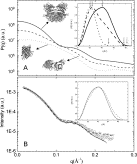 18th July 2008 – 11:00
18th July 2008 – 11:00
Speaker:
Prof. Patricia Targon Campana
Location:
U.M. Grassano, Campus
Abstract:
The understanding of the relation between the protein structure and its function is an important challenge in Science, since proteins are involved in all crucial process for life appearing and maintenance. In this sense, the comprehension of stability and conformational mechanisms that can interfere in the protein function is essential to achieve the knowledge and subsequent treatment of several pathologies. Among the most interesting proteins for these studies one can find the lectins: proteins that present the ability to bind carbohydrates specifically and in a reversible way. As carbohydrates can be found in cell membranes, this special feature makes these proteins proper to mediate molecular recognition processes as cell proliferation, cell-cell and cell-virus interactions. Although those proteins have been extensively studied during the last decades, new lectins with interesting properties have been isolated and even the most studied ones presented open questions about their biological function and conformational changes as well. In this sense, this talk aims to present some conformational studies of lectins and other proteins with biotechnological application that have been performed in several structure levels. The changes in secondary structure by means of Far-UV Circular Dichroism, steady-state and phase domain fluorescence at aromatic vicinities and tertiary and quaternary levels using Small-Angle X-Ray Scattering (SAXS) will be presented.
Conference Paper: Photonic devices based on patterning by two photon induced polymerization technique
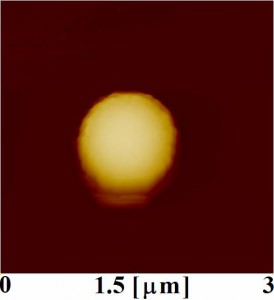 Strasbourg, France
Strasbourg, FranceDOI: 10.1117/12.786414 Conference: Conference on Nanophotonics II, Volume: 6988
« Previous 1 … 5 6 7 8 Next »


